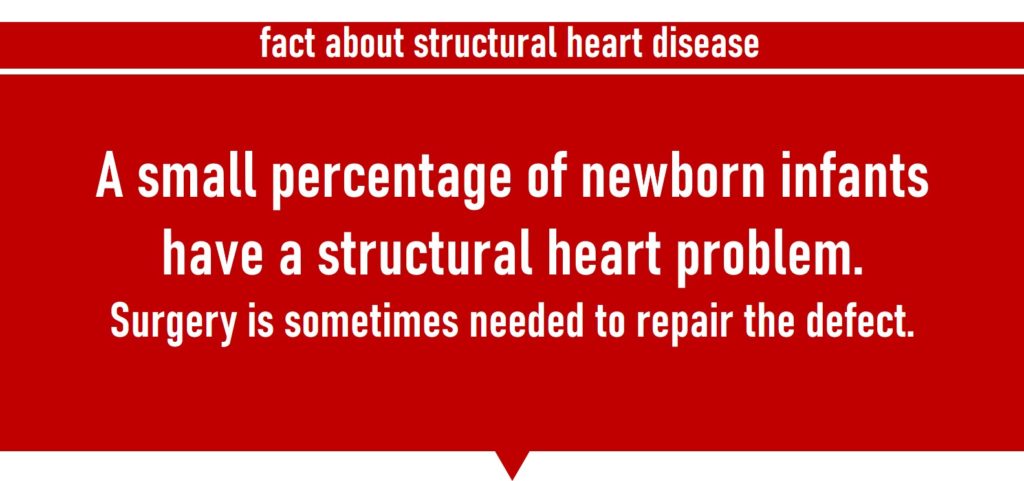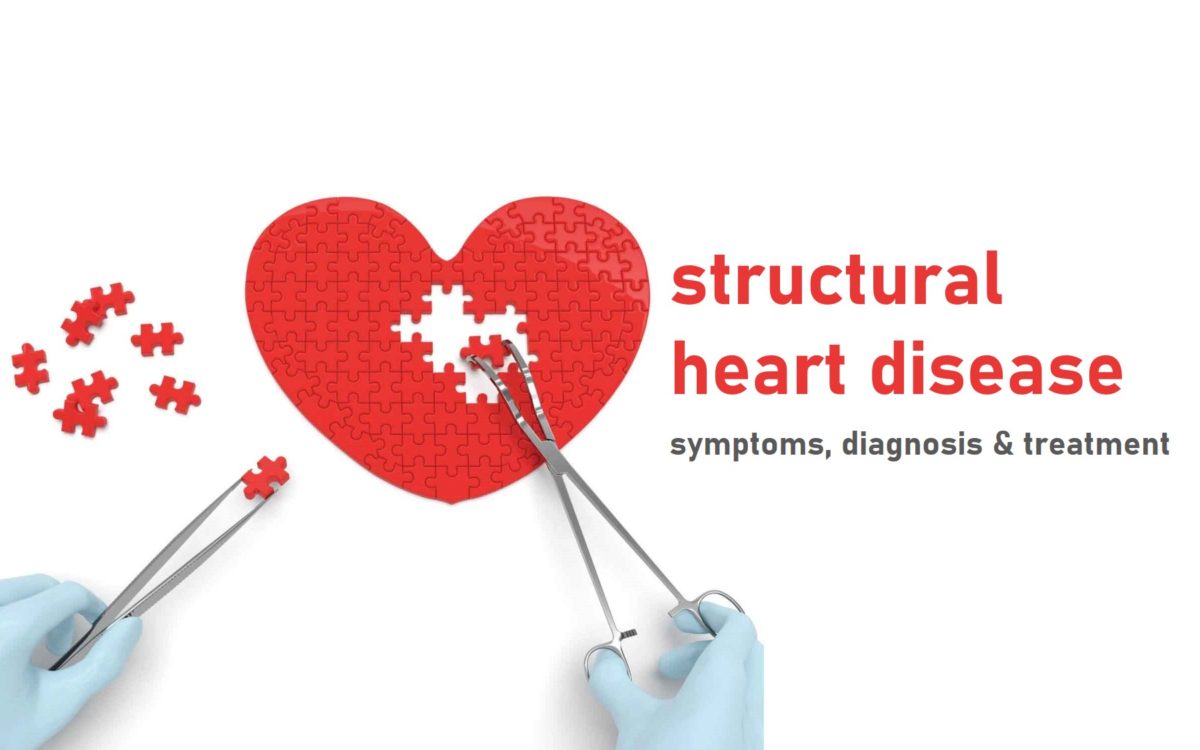Structural heart disease is a problem with the heart tissues or valves of the heart. Many, structural heart diseases are congenital heart disease, which means present at birth. Some structural heart disease will develop later in life.
THERE ARE MANY KINDS OF STRUCTURAL HEART DISEASES.
Aortic valve stenosis
Valvular stenosis occurs when a heart valve doesn’t fully open due to stiff or fused leaflets. The narrowed opening may make the heart work very hard to pump blood through it.
Heart valve disease
Heart valve disease is when one or more valves in the heart is damaged causing problems with blood flow.
Mitral valve regurgitation
In this condition, one of the valves in your heart, the mitral valve, lets blood leak backward into the heart.
Cardiomyopathy
This condition is described as changes in the heart muscle. In most cases, the muscle becomes stiff and enlarged.
Marfan syndrome
It can cause an aneurysm to form in the aorta or cause problems with the mitral valve.
Myocarditis
This is when the heart muscle becomes inflamed.
SYMPTOMS WITH STRUCTURAL HEART DISEASES
Most of the times symptoms will include:
- Mini strokes, also known as transient ischemic attack (TIA)
- Stroke
- Shortness of breath
- Chest pain
- A tight feeling in the chest
- High blood pressure
- Leg cramps – Peripheral Artery Disease (PAD)
- Kidney dysfunction
- Irregular heart beats
- Extreme tiredness (fatigue)
- Coronary artery disease
DIAGNOSIS & TESTS
Your cardiac surgeon will evaluate your signs and symptoms and may conduct a physical examination. Doctor will listen to your heart murmur as this can be a sign of a heart valve condition. There are several tests to diagnose this condition further. Tests may include:
- Echocardiography
- Electrocardiogram (ECG)
- Chest X-ray
- Cardiac MRI
- Exercise test or Stress test
- Cardiac Catheterization
STRUCTURAL HEART DISEASE TREATMENT

Sometimes, you don’t need any treatment for your structural heart disease, but your doctor will probably want you to get tested regularly to see if your disease changes or gets worse. If treatment is needed, some of the possible treatments might include:
- Prescribe and adjust medicine
- Open or bypass coronary arteries – CABG
- Repair or replace heart structures
- Implant cardiac devices
- Replace or assist your heart – heart transplant
Defective heart valves and other structural heart defects are often treated through traditional open-heart surgery. Several minimally invasive cardiac surgery to address these issues are becoming more common as well such as transcatheter aortic valve replacement (TAVR).
“TAVR brings new hope for people with advanced heart disease, especially for older patients whose frailty or degree of heart damage make an open-heart procedure challenging. It’s easier on the patient, allows for quicker recovery and, ultimately, can improve our patients’ quality of life.”
–Dr. Matthew Jonovich | Part of expanded Henry Ford Center for Structural Heart Disease Program
CAN STRUCTURAL HEART DISEASE BE PREVENTED?
Most of the time, structural heart disease is something that you are born with, and there is nothing that you can do to prevent it. However, there are times that it may develop after birth. If this is the case, some things that can prevent structural heart disorder include:
- Prevent clogging of the arteries with lifestyle changes
- Keep habit of regular exercise
- Manage blood pressure
- Limit the use of alcohol & drugs
While the structure of your heart may not be completely in your control, living a heart-healthy lifestyle is. It ensures your heart is as strong as it can be. Do you have questions about structural heart disease?
Contact Dr. Tejas V. Patel – Cardiologist in Ahmedabad.











